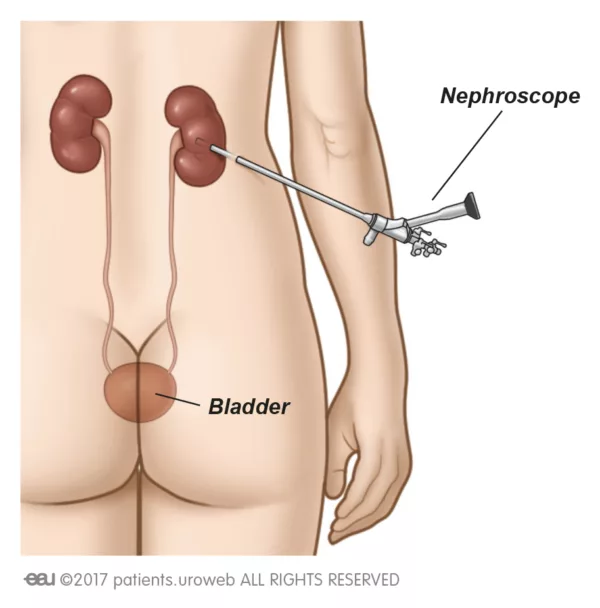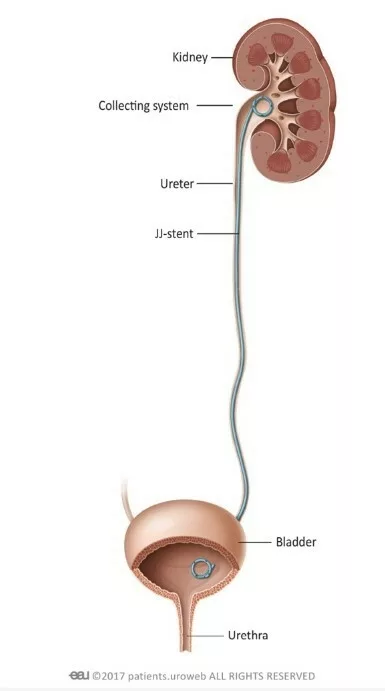Related topics for further reading
How it works
This type of operation is carried out when you have a number of kidney stones that are hard to reach or if they are too large (larger than 2cm) to be treated with shock waves or other methods like ureteroscopy.
During the operation, the doctor makes a small cut in your back to reach your kidney and remove the stones.
This type of surgery is done while you are asleep under general anaesthesia. You will need to stay in the hospital until you're able to comfortably empty your bladder and your pain and risk of bleeding are well controlled.
After the surgery, your doctor may place a small plastic tube (called a stent) to help urine flow, or a thin tube (called a nephrostomy tube) may be inserted through your back to drain urine into a bag. These are only temporary and will be removed by your doctor after a few days.
This animation shows what happens during percutaneous nephrolithotomy.
This chapter contains general information about kidney stones. It is not a substitute for professional medical advice or treatment. Always consult your doctor or healthcare provider for guidance on your individual medical situation.
Last updated: July 2025
Reviewed by:
- Dr. Amelia Pietropaolo (YAU Working Group on Endourology & Urolithiasis)
- Dr. Riccardo Lombardo (Guideline Panel on Urinary Incontinence)





